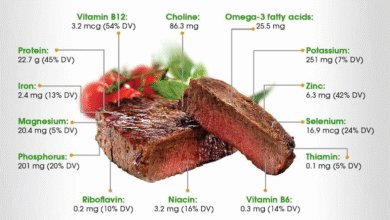Relacorilant for Ovarian Cancer: A Promising Treatment
Relacorilant for ovarian cancer is emerging as a transformative option for women battling treatment-resistant ovarian cancer, a prominent and grave challenge in oncology. Recent phase 3 ROSELLA trial results indicate that this novel drug, when combined with the chemotherapy agent nab-paclitaxel, significantly enhances overall survival rates and postpones disease progression in patients diagnosed with platinum-resistant ovarian cancer. Conducted globally, the trial demonstrated a remarkable 30% reduction in the risk of disease deterioration, showcasing Relacorilant’s potential to reshape treatment landscapes for patients reliant on ovarian cancer drugs. As the search for effective chemotherapy options for ovarian cancer continues, these findings spark hope among those affected. With Relacorilant on the horizon, a brighter outlook for patients grappling with treatment-resistant forms of this disease may soon become a reality.
In the battle against ovarian cancer, particularly the forms resistant to traditional therapies, recent advancements are bringing new hope to patients worldwide. For those grappling with platinum-resistant ovarian tumors, innovative treatments like Relacorilant are being studied in significant trials, paving the way for enhanced survival rates and improved quality of life. The ROSELLA trial, a large-scale clinical study, shines a light on the promising outcomes of this combination therapy, potentially redefining the options available to women facing the daunting challenge of ovarian malignancies. With ongoing research into the efficacy of various ovarian cancer treatments, especially those resistant to standard chemotherapy, healthcare providers are optimistic about novel interventions like Relacorilant. This evolving landscape represents a crucial step forward in the quest for effective therapies that not only prolong life but also address the pressing needs of patients living with ovarian cancer.
The Promise of Relacorilant for Ovarian Cancer
Relacorilant is emerging as a groundbreaking treatment option for patients facing the challenges of treatment-resistant ovarian cancer. In the recent phase 3 ROSELLA trial, this innovative drug underwent rigorous testing alongside nab-paclitaxel, a widely used chemotherapy drug. The trial demonstrated a significant improvement in overall survival and a notable delay in disease progression. Given that ovarian cancer is notoriously resistant to many treatment modalities, the results from this study represent a beacon of hope for patients battling this deadly disease.
What sets Relacorilant apart is its mechanism of action, targeting specific hormonal pathways that can impede tumor growth. The ROSELLA trial results indicate a promising 30% reduction in the risk of disease progression for patients with platinum-resistant ovarian cancer. This remarkable efficacy highlights the drug’s potential to redefine the standard of care in oncology, especially for those who have exhausted traditional chemotherapy options. As we look to the future, the combination of Relacorilant with established chemotherapy regimens may pave the way for more effective therapeutic strategies.
Understanding Treatment-Resistant Ovarian Cancer
Treatment-resistant ovarian cancer presents significant hurdles for both patients and oncologists. When ovarian cancer recurs shortly after platinum-based chemotherapy—typically within six months—it is classified as platinum-resistant. This classification complicates treatment options, as standard approaches often fail to yield positive outcomes. The urgency for new therapeutic alternatives has led researchers to explore drugs like Relacorilant, which have shown substantial promise in clinical trials by offering a new lease on life for those who have seen limited success with conventional therapies.
In light of the challenges posed by treatment-resistant forms of the disease, understanding the underlying biology of ovarian cancer becomes crucial. Many patients experience resistance to existing ovarian cancer drugs, leading to a cycle of successive therapies that often fail to control the cancer’s advance. This urgent scenario underscores the need for ongoing research and innovative drug development. By focusing on unique biological pathways, the medical community aims to deliver personalized treatment strategies that can lead to prolonged survival and improved quality of life for these patients.
The Role of Chemotherapy Options for Ovarian Cancer
Chemotherapy remains a cornerstone in the treatment of ovarian cancer, despite its limitations in cases of resistance. Standard chemotherapy options primarily include platinum-based agents, which have historically been effective for managing the disease in its initial stages. However, as resistance develops, the effectiveness of these treatments diminishes, necessitating the exploration of alternative therapies. The combination of Relacorilant with nab-paclitaxel represents a promising shift in this landscape, as it combines traditional chemotherapy with novel agents that enhance treatment efficacy.
The array of chemotherapy options available for ovarian cancer patients reflects a desire for tailored treatment regimens that consider individual patient responses and disease characteristics. While many patients have benefitted from platinum-based therapies, the challenge of resistance continues to spur innovation in drug development. By integrating new drugs like Relacorilant into treatment protocols, oncologists hope to not only improve response rates but also extend survival times for those who are battling platinum-resistant ovarian cancer.
Relacorilant Trial Results: What They Mean for Patients
The trial results for Relacorilant provide critical insights into its efficacy and safety profile for ovarian cancer patients. The ROSELLA trial showcased a significant improvement in overall survival and disease progression, marking a pivotal advancement in the treatment landscape for those grappling with treatment-resistant disease. As noted by clinical experts, a 30% decrease in the risk of recurrence is particularly noteworthy, emphasizing the potential for this drug to become a viable option for patients who have limited treatment avenues left.
Moreover, the trial demonstrated that Relacorilant is well-tolerated, with no significant increase in adverse side effects compared to traditional chemotherapy. This aspect is vital, as quality of life remains a crucial consideration for patients undergoing cancer treatment. The promising data from this trial not only instill hope in patients but also pave the way for future studies aimed at evaluating long-term outcomes and understanding the full spectrum of benefits provided by Relacorilant.
The Significance of Early Intervention in Ovarian Cancer
Early intervention in ovarian cancer is typically associated with improved outcomes; however, the reality of treatment-resistant cases often complicates this picture significantly. Recognizing the cancer in its early stages and taking prompt action can greatly enhance survival prospects. Awareness of symptoms and risk factors is therefore crucial, not only for patients and healthcare providers but also for ongoing research into effective early detection methods.
The role of drugs like Relacorilant in the context of early intervention is particularly relevant. As researchers continue to uncover the mechanisms of ovarian cancer and its resistance pathways, there is hope that combination therapies can be developed that leverage the strengths of existing drugs and new agents. Such strategies could not only benefit those diagnosed at later stages but might also be adapted for individuals at higher risk, creating a proactive approach that could transform the trajectory of ovarian cancer treatment.
Clinical Implications for the Future of Ovarian Cancer Treatment
The findings from the Relacorilant trial carry significant clinical implications for the future of ovarian cancer therapy. As the medical community seeks to develop more effective strategies for managing treatment-resistant forms of the disease, the results provide a blueprint for how new agents can be integrated into existing treatment protocols. With ongoing clinical evaluations and updated guidelines, there is potential for Relacorilant to be adopted into routine practice, offering renewed hope for patients who have limited options.
Moreover, the demonstration of improved survival rates with Relacorilant inspires further research into combination therapies that could enhance efficacy. As oncologists and pharmaceutical scientists collaborate to explore the intersection of drug mechanisms, the focus shifts toward optimizing treatment regimens. The innovative approach represented by the ROSELLA trial may serve as a catalyst for developing a more comprehensive arsenal of therapies aimed at overcoming the persistent challenges posed by ovarian cancer.
Patient Perspectives on New Ovarian Cancer Treatments
Patients’ perspectives on new treatments like Relacorilant are invaluable, illustrating the real-world implications of clinical research outcomes. As patients often seek the latest advancements to enhance their treatment options, understanding their experiences can lead to more patient-centered care. The positive results from the ROSELLA trial ignited excitement among the ovarian cancer community, reflecting a collective hope for improved health outcomes through innovative therapies.
Moreover, as awareness grows surrounding treatment-resistant ovarian cancer, patients are increasingly advocating for participation in clinical trials. This engagement is crucial, as it not only offers patients access to groundbreaking therapies but also contributes to the vast body of knowledge shaping future treatment paradigms. The dialogue around new drugs, particularly those that promise enhanced survival rates and quality of life improvements, is essential in fostering a supportive environment for those affected by this disease.
Innovations in Ovarian Cancer Research
Recent innovations in ovarian cancer research represent a significant shift towards understanding and treating this complex disease. With the advent of targeted therapies and the integration of novel agents like Relacorilant, there has been renewed enthusiasm in the oncology field. Research efforts are increasingly focused on characterizing ovarian cancer at a molecular level, leading to more personalized treatment approaches that address the unique characteristics of each patient’s tumor.
Additionally, ongoing studies are exploring innovative combinations of therapies that incorporate both traditional chemotherapy agents and newer drugs. The emphasis on collaboration between researchers and clinicians has allowed for rapid advancements in the development of effective treatment strategies. As science continues to push boundaries, there is optimism that discoveries made today will translate into transformative therapies, enhancing survival rates and improving the quality of life for ovarian cancer patients.
Future Directions for Ovarian Cancer Treatments
The future of ovarian cancer treatments is looking more promising with emerging therapies such as Relacorilant leading the way. Continuous research into understanding drug resistance has paved the way for developing newer agents that target specific survival mechanisms of ovarian cancer cells. Ongoing clinical trials focusing on combination therapies promise to refine treatment protocols further, potentially integrating drugs like Relacorilant with established chemotherapy options to optimize patient outcomes.
As we anticipate future breakthroughs, the commitment to advancing ovarian cancer research remains essential. With dedicated funding and collaboration between research institutions, healthcare providers, and patient advocacy groups, the landscape for ovarian cancer treatment is evolving. By harnessing innovative treatments and conducting rigorous studies, there is hope for more effective strategies that could ultimately improve survival rates and offer a better quality of life for those diagnosed with ovarian cancer.
Frequently Asked Questions
What is Relacorilant for ovarian cancer and how does it work?
Relacorilant is a promising new drug specifically designed for the treatment of treatment-resistant ovarian cancer. It operates by inhibiting the action of glucocorticoids, which are hormones that can promote tumor growth. This mechanism is particularly beneficial when combined with chemotherapy options for ovarian cancer, such as nab-paclitaxel, enhancing overall survival rates and delaying disease progression.
What were the key findings of the ROSELLA trial regarding Relacorilant for ovarian cancer?
The ROSELLA trial demonstrated significant results, including a 30% reduction in the risk of disease progression in patients with platinum-resistant ovarian cancer. Additionally, there was a noted improvement in overall survival rates for those taking Relacorilant alongside nab-paclitaxel, indicating its potential as a vital treatment option for patients resistant to standard chemotherapy.
How is Relacorilant administered in conjunction with chemotherapy for ovarian cancer?
Relacorilant is administered orally in a specific regimen: one day before, the day of, and one day after the infusion of nab-paclitaxel. This combination has shown promise in increasing the efficacy of chemotherapy options for ovarian cancer, particularly for those suffering from platinum-resistant cases.
What makes Relacorilant a groundbreaking option for treatment-resistant ovarian cancer?
Relacorilant is considered groundbreaking because it is the first drug of its kind to show significant efficacy against treatment-resistant ovarian cancer, providing patients with a new hope where traditional ovarian cancer drugs have failed. Its unique mechanism and the results from recent trials highlight its potential in improving both progression-free and overall survival.
What does the future hold for Relacorilant based on the recent trial results?
Given the promising results from the ROSELLA trial, which highlighted significant improvements in survival and disease management, experts anticipate that Relacorilant may soon receive clinical approval. The excitement surrounding its effectiveness against platinum-resistant ovarian cancer signals a potential shift in treatment strategies for this challenging disease.
How does Relacorilant compare to traditional ovarian cancer drugs?
Unlike traditional ovarian cancer drugs that often face challenges with resistance, Relacorilant targets glucocorticoid action and has shown effectiveness in overcoming resistance in treatment-resistant ovarian cancer. This positions it as a vital alternative, especially for patients who have exhausted other chemotherapy options, making it a crucial part of future ovarian cancer treatment protocols.
| Key Point | Details |
|---|---|
| Drug Name | Relacorilant |
| Clinical Trial | Phase 3 ROSELLA trial conducted with Corcept Therapeutics |
| Patient Demographics | 381 patients from around the world including the U.S., Europe, South Korea, Brazil, Argentina, Canada, and Australia |
| Treatment Combination | Relacorilant combined with nab-paclitaxel (a chemotherapy drug) |
| Results | 30% reduction in disease progression risk and significant improvement in overall survival |
| Administration Schedule | Taken orally one day before, on the day of, and one day after nab-paclitaxel infusion |
| Safety Profile | Reported to be well-tolerated, with no increase in side effects |
| Experts’ Views | Researchers and oncologists express excitement and hope for clinical approval soon |
| Future Presentation | Findings to be presented at a medical conference later this year |
Summary
Relacorilant for ovarian cancer is showing significant promise in treating patients with treatment-resistant forms of the disease. This innovative drug, which has undergone rigorous testing in the phase 3 ROSELLA trial, combines with nab-paclitaxel to improve survival rates and slow disease progression. With findings indicating a notable reduction in the recurrence of cancer and a strong safety profile, Relacorilant represents a hopeful advancement in the arsenal against ovarian cancer—a disease that is notoriously difficult to treat. As researchers and medical professionals look forward to its potential clinical approval, the positive outcomes could bring new treatment options for many patients facing limited choices.




